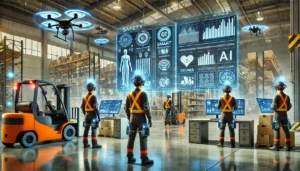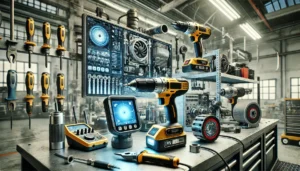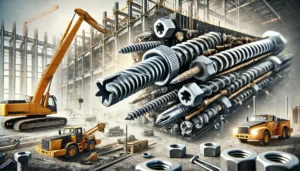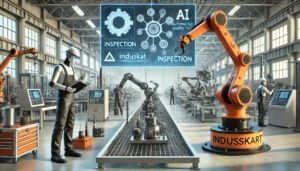Modern industrial systems heavily depend on instrumentation as it enables the monitoring and control of different parameters in real-time. Sensors are peripheral parts that capture environmental signals and produce a readable output that is processed by control systems. Choosing the right sensors for industrial activities is a key consideration for productivity, safety, and performance. If told in the simplest form, understanding system needs, market conditions, and how sensors are positioned in the wider picture of automation is essential. It is similarly crucial to comprehend what the ‘right’ sensor translates to.
Understanding Industrial Sensors
Different types of industrial sensors are developed not only to monitor but also to measure temperature, pressure, flow, level, motion, and even proximity. As the processes are automated, these sensors help operators ensure that the system is operating at its optimal performance level through precise real-time readings. For many industrial applications including manufacturing, food processing, pharmaceuticals, and power generation, the information collected by the sensors is critical for processes control and adjustments, irregularities detection, and standards compliance.
Factors to Consider When Selecting Sensors
When choosing sensors for specific industrial applications, precision measurement, control system compatibility, and component life expectancy should be considered.
- Measurement Requirements:
- The first step in selecting a suitable sensor is defining which parameter is to be measured. It can be flow rate, pressure, temperature level, or position. Each application has a specified level of accuracy and sensitivity that must be met. For instance, chemical processing involves temperature measuring devices which have to be exceptionally accurate within a set range. Conversely, position sensors are necessary in robotic arms which have assembly functions.
2. Environmental Factors:
- The place of use is also one of the other factors to be considered in selection of the sensor. Industrial working conditions can be severe due to heat, high humidity, chemicals, and vibration. Thus, sensors have to be tough to the extent of these conditions. For example, sensors which operate within high temperature should be able to withstand process conditions and at the same time, pressure sensors should be able to endure changes in the fluid pressure within the system.
3. Response Time:
- In some industries, processes need to be adjusted immediately and hence the sensor should detect changes within the environment accurately. In this case, quick response time is key. Such sensors are essential on fast moving assembly lines as well as on machines where accurate operation is crucial for safety.
4. Compatibility:
- The sensors are supposed to be working with the specific control system. This means that the output signal of the sensor has to be appropriate for the input of the system. Depending on the level of sophistication, various systems may implement analog or digital or even fieldbus signals, so there is a need to make sure that the sensor can indeed be integrated into the existing system.
5. Maintenance and Longevity:
- Sensors are subjected to the elements as well as regular use. Picking a sensor that is low maintenance with a long operational life can greatly minimize downtime and maintenance expenses. Reliability comes at a price, however. Sensors that require frequent calibration or servicing may greatly increase operational expenses.
6. Cost-Effectiveness:
- If accuracy and performance of the sensors is important, then it is reasonable to expect more expensive models. A budget should be put in place considering your needs, alongside the application of the sensor to ensure that you do not overspend. Often, maintaining a healthy balance is most suitable, so having a cheaper sensor where a slight compromise to performance is acceptable can be beneficial.
Types of Industrial Sensors
Specific industrial applications will require different types of sensors, and these sensors will be different in design and form. Knowing the working processes of each type makes it easier to select the appropriate sensor for a given task.
- Temperature Sensors:
- The temperature sensors of particular interest are the thermocouples and resistance temperature detectors (RTDs). These sensors are particularly utilized in processes that require stringent temperature regulation. At a minimum, these sensors record the temperature of fluids, pieces of equipment as well as the ambient surrounding atmosphere and relay feedback to control systems to regulate the temperature to the set point.
- Pressure Sensors:
- Alongside flow sensors developed as part of modern systems for monitoring and controlling processes, it is crucial to have pressure sensors that handle the pressure of liquids and gases within pipelines, tanks, and reactors. These sensors help in ensuring maintenance of the set pressure for the equipment for safety and damage avoidance reasons.
- Flow Sensors:
- A distinct group among measuring instruments are systems which record and control the movement of liquids or gases like oil, water, or air through a pipe or system. These instruments are particularly important in water treatment facilities, oil and gas pipelines, and HVAC systems to ensure that operational processes have a set operational flow that can be optimally managed.
- Level Sensors:
- Level sensors have an application in automation where measurements of height of liquids and solids inside of large tanks or containers is done. The height can be a cause for overflow and even the maintenance of optimal storage levels as well as materials supply have to be ensured by some of the processes.
- Proximity Sensors:
- A proximity sensor is an electronic device that works without contact. It can tell whether an object is present in the surrounding area. Their applications include assembly lines, robotic activities, and material handling systems where equipment safety and performance are paramount.
- Motion Sensors:
- Devices which capture movements are called motion detectors and they are used in security systems, robotics, and even autonomous systems. Motion sensors allow the tracking of the position and movements of equipment or materials.
- Gas and Chemical Sensors:
- They identify and measure certain chemicals or gases in the environment. Such sensors are very important in the petrochemical, food, and pharmaceutical industries. Monitoring the presence of hazardous gases and controlling chemical concentrations is essential for safety and compliance with legal regulations.
Best Practices for Sensor Selection
- Conduct a Thorough Needs Assessment:
- Highlight the specific objectives of your application. Take into account the operating environment, measurement precision, and other general surrounding conditions. Collaborate with engineers that will specify what data is essential and how it will be used within the control systems.
- Consult with Experts:
- Working with sensor manufacturers or industry specialists can help define the right type of a sensor for your particular case. They will be able to evaluate your requirements and advise you on the appropriate sensor type to deploy.
- Prototype and Test Sensors:
- Before rolling out a large-scale installation, it is best to validate the sensor’s performance in operational environments. Prototyping enables you to test whether the sensor meets the necessary levels of expectation for the application and that it operates satisfactorily in the expected working environment.
- Consider Future Upgrades:
- Plan for the incorporation of future changes on the sensor system. It is as important to choose sensors that will have the capacity to cope with the expected changes in your processes, including increased activity levels and the introduction of new technologies.
- Focus on Energy Efficiency:
- Sensor technologies have a developmental trend towards ameliorated energy efficiency, which lessens the environmental impact of industrial activities. Choosing high-efficiency sensors will help industrial operations lower energy consumption and operational expenditures in the long-term.
Conclusion
Choosing sensors for an industrial application is an important task that affects the effectiveness and safety of the operations. Taking into account crucial elements like measurement precision required, conditions of the environment, compatibility of the system, and maintenance strategies needed enables industries to utilize sensors that capture precise data, integrate into control systems, and function in difficult settings. Knowing the various types of sensors and best practices during the selection process helps the companies streamline their processes, cut down operational expenses, and boost system performance.










